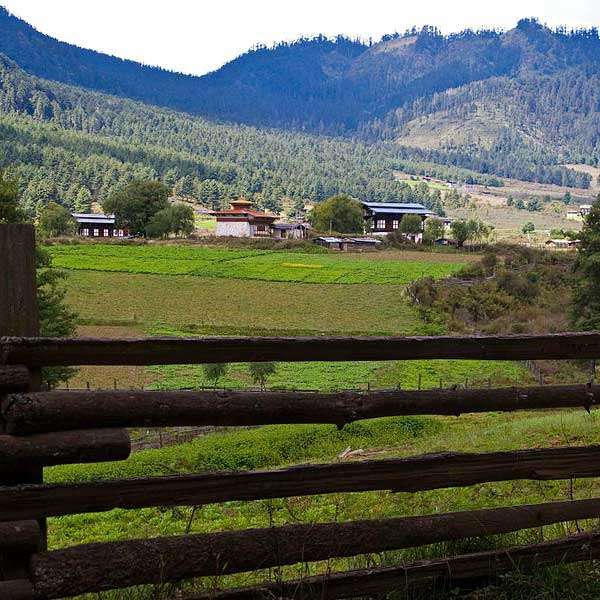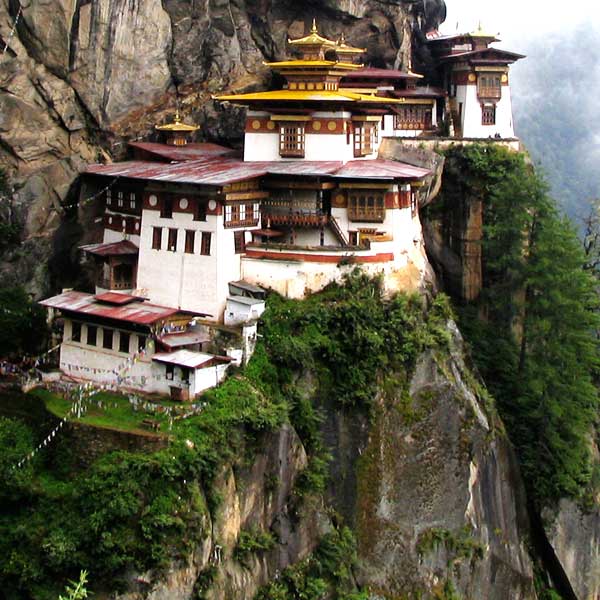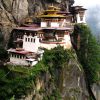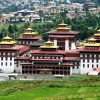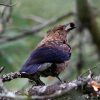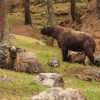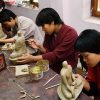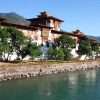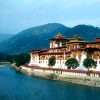Description
Day Wise Tour Plan
After arriving at Paro International Airport, you will be welcomed by your dedicated certified guide, and after immigration & baggage collection you will proceed to your hotel in Thimphu, capital of Bhutan. After refreshment you will start your trip according to below itinerary with certified guide and dedicated vehicle.
National Memorial Chorten
Memorial chorten has been designed to present it as “one of the most visible religious structures in Thimphu”. The Memorial Chorten, in the heart of the city, is designed is a Tibetan style chorten, also called as the Jangchup Chorten, patterned on the design of a classical stupa. The feature that is distinct here is the outward flaring of the rounded part to give the shape of a Vase, unlike a dome shape. National Memorial chorten is an extraordinary example of Buddhist architecture and artwork with its gorgeous paintings and intricate sculptures. You will find elderly Bhutanese people circumambulating this throughout the day.
Tashichho Dzhong
It is a Buddhist monastery and fortress in the city of Thimphu Bhutan, on the western bank of the Wang Chu River. This was built in 1641 Zhabdrung Ngawang Namgyal acquired it but finding it too small, he built another one, known as the lower Dzong. Tashichho Dzong has been the seat of the government since 1952 and presently houses the throne room and offices of the king, the secretariat and the ministries of home affairs and finance.
Overnight Hotel in Thimphu
Motithang takin preserve National Park
Motithang Takin (National animal) Preserve national park is located in the Motithang in Thimphu, a wildlife reserve area for Takin. This was started as a mini zoo; later the King of Bhutan felt that it was improper for a Buddhist country to confine animals for religious and environmental reasons. He therefore ordered the release of the animals and the closure of the mini-zoo on converted into a preserve. The reason for declaring takin as a National Animal of Bhutan on 25 November 2005 (Budorcas taxicolor) is attributed to a legend of the animal’s creation in Bhutan in the 15th century by Lama. The preserve also holds a few sambar and barking deer.
Sangaygang View Point
Sangaygang is located north west of the Thimphu Valley and famous for the dating and taking a walk around the blue pines. Sangaygany is the most heard place with the lovers around the Capital City of Thimphu, as the lovers and people of all kind rush towards the top of the hills, their feeling and sentiment changes watching the picturesque Thimphu Valley from a point as when in evening, you get to see the sun closest the Thimphu valley and the lovers or people just feel warmth inside their heart. You go there, get yourself refresh from the routine life or to ease the tension or just take your loved one or with family in cool evening of the Thimphu breeze.
Weekend market – Thimphu
The Weekend Market occupies stalls on both banks of the Wang Chhu, just north of Changlimithang Stadium. Vendors from throughout the region start arriving on Thursday and Friday, and remain until Sunday night. You can buy wooden bowls, mala beads, printing blocks, amulets, yak tails and prayer wheels, some of which are made in Nepal.
Overnight in a hotel in Thimphu.
Changangkha Lhakhang
This is an old fortress like temple and monastic school perched on a ridge above Thimphu, south east of Motithang. It was established in the 12 century on a site chosen by Lama Phajo Drukgom Shigpo, who came from Ralung in Tibet. The Central statue is Chenresing in a 11-headed manifestations, and the books in the temple are larger in size than usual Tibetan texts. Here are large prayer wheels inside the monastery and small wheels on the walls outside the monastery. Please assure you have a special permit to enter in to this monastery, otherwise you can have a excellent view of Thimphu from the courtyard.
National institute of zorig chusum
The Institute Zorig Chusum falls under the national technical training authority which was created in 1990 to improve the quality of vocational training. The art taught today, in Bhutan was introduced in the fifteenth century, by Terton Pema Lingpa. These traditional crafts represent hundreds of year’s knowledge and ability that has passed down the generations. Here you can see the amazing skills for art and craft.
National Library
The National Library of Bhutan (NLB) was established in 1967 under the patronage of HM Queen Ashi Phuntso Choden (1911–2003), with a small collection of precious texts, for the purpose of “Preservation & Promotion of the rich cultural & religious heritage” of Bhutan. This is located in the Kawajangsta area of Thimphu, just above the Royal Thimphu Golf Course, nearby Bhutan Folk Heritage Museum.
Kuensel phodrang (Buddha Point)
Buddha Dordenma is massive statue of Shakyamuni measures in at a height of 51.5 meters, making it one of the largest statues of Buddha in the world. The statue is made of bronze and is gilded in gold. 125,000 smaller Buddha statues have been placed within the Buddha Dordenma statue, 100,000 8 inch tall and 25,000 12 inch tall statues respectively. Each of these thousands of Buddhas has also been cast in bronze and gilded. The throne that the Buddha Dordenma sits upon is a large meditation hall.
The Buddha Dordenma is located atop a hill in Kuensel phodrang Nature Park and overlooks the Southern entrance to Thimphu Valley. The statue fulfills an ancient prophecy dating back to the 8th century A.D that was discovered by Terton Pema Lingpa (Religious Treasure Discoverer) and is said to emanate an aura of peace and happiness to the entire world.
Overnight stay in a hotel in Thimphu.
Simtokha Dzhong
It is a small dzong located about 5 km south of the capital of Thimphu; this was built in 1629 by Ngawang Namgyal. Simtokha Dzong known as Sangak Zabdhon Phodrang (Place of the profound meaning of secret mantras), it is often said the first Dzong built in Bhutan. It is the home of the institute for language & culture studies, the students are both monk & lay people. You can find countless statues and paintings of various Buddhas, deities and religious figures including The Eight Manifestations of Guru Rimpoche, Jampelyang the Bodhisattava of Wisdom, Shakya Gyalpo the Buddha of Compassion and many more, all carved and painted in exquisite detail.
Dochula Pass
Dochula Pass known as the Druk Wangyal Chortens- the construction of these 108 chortens was commissioned by the eldest Queen Mother, Her Majesty Ashi Dorji Wangmo Wangchuk. The pass is also popular spiritual destination for both locals and tourists because an important (Druk Wangyal Lhakhang) temple is located on the crest of Dochula pass. It offers a stunning 360 degree panoramic view of Himalayan mountain range. The view is especially scenic on clear, winter days with snowcapped mountains forming a majestic backdrop to the tranquility of the 108 chortens gracing the mountain pass. Bhutanese families enjoy visiting the pass during holidays and weekends to picnic and simply enjoy the scenery. For tourists this is ideal location to capture beautiful pictures of Himalayan mountain range during clear, warm days.
After reaching Punakha check into the hotel and take some rest there later you can go and explore Punakha market.
Overnight hotel in Punakha.
Punakha Dzong
It is also the country’s most beautiful Dzong. It is the winter residence of Bhutan’s Central Monastic Body led by HH the Je Khenpo. Punakha Dzong was the administrative Centre and the seat of the Government of Bhutan until 1955, when the capital was moved to Thimphu. Punakha Dzong is built at the confluence of Pho Chhu & Mo Chhu Rivers and is an especially beautiful sight on sunny days with sunlight reflecting off the water onto its white-washed walls. Punakha Dzong is notable for containing the preserved remains of Zhabdrung Ngawang Namgyal, the unifier of Bhutan as well as a sacred relic known as the Ranjung Karsapani. The wedding of the King of Bhutan, Jigme Khesar Namgyel Wangchuck, and his fiancé, Jetsun Pema, was held at the Punakha Dzong, on 13 October 2011.
Chimi Lhakhang
Chime Lhakhang is a Buddhist monastery in Punakha, stands on a round hillock. The monastery is the repository of the original wooden symbol of phallus that Kunley brought from Tibet. This wooden phallus is decorated with a silver handle and is used to bless people, who visit the monastery on pilgrimage, particularly women seeking blessings to be get children. The Chime Lhakhang square in shape with a golden spire. It is a golden yellow roofed building. It has a row of prayer wheels and its exterior walls are embedded with slates carved with images of saints. Near the entrance to the Lakhang, there is this small chorten which marks the location where the demoness was subdued by Lama Kunley. The prayer hall inside the monastery has tantric paraphernalia, thangkas, bells, drums, horns, dorjis and a kangd. The statue of Kunley, in a monk’s robe, is centrally located at the altar here; in a reclining position with a ceramic statue of his dog Sachi. Women who come to the monastery seeking blessings of children get hit on the head by the presiding Lama with a ivory, wood and bone phallus.
Overnight stay in a hotel in Punakha.
Ta Dzong (National Museum)
Ta-Dzong, an ancient watchtower, which now houses the National Museum. It is located about five and a half kilometers away from the main town of Paro and 500 feet from the Rinpung Dzong located below the museum. Cameras are not allowed inside the museum, but you can photograph the ta dzong and surrounding grounds.
Rinpung Dzhong (Paro Dzong)
The construction of the Rinpung Dzhong (Paro Dzong) began in 1644 on the order of Zhabdrung Ngawang Namgyal, the unifier of modern-day Bhutan. Unlike most of the other dzongs in Bhutan, it survived the massive 1897 earthquake though it was damaged by fire in 1906. Paro Dzong’s full name is Rinpung Dzong, which means ‘the fortress of the heap of jewels’. The approach toward the Dzong is through a traditional covered bridge called the Nemi Zam. A paved stone path runs alongside the imposing outer walls of the structure. The valley’s annual springtime religious festival called the Paro Tsechu is organized each year in the courtyard of the dzong and is attended by tourists from all over the world. Overnight in a hotel in Paro.
Tiger Nest Monastery
Tighter Nest Monastery (Taktsang Lhakhang) is Bhutan’s most iconic landmark and religious site. The name Taktsang translates to “The Tiger’s Nest”. This temple is one of the most holy sites in the kingdom. It is believed that Padmasambhava (Guru Rinpoche) flew to this location from Tibet on the back of a tigress from Khenpajong. This place was consecrated to tame the Tiger demon, was first built in 1692 at a cave where Guru Rimpoche meditated in a cave, in the 7th century A.D. for 3 years, 3 months, 3 days and 3 hours in order to subdue evil demons residing within it. The cave has been considered a sacred site ever since and many famous saints have travelled to meditate in it.
In order to arrive at the temple you must trek for around 2-3 hours through beautiful, shady pine forests that is colorfully festooned with moss and prayer flags. On many days, clouds shroud the monastery and give an eerie feeling of remoteness. No trip to Bhutan would be complete without a visit to this remarkable heritage site.
Overnight stay in a hotel in Paro.
Haa valley
Haa valley is located about 3 hours west of Paro. The Drive from Paro to Haa valley takes you up to the Chele-La pass which is located at a height of about 3800 meters. Make sure you ask you drive to stop the car here so you can enjoy a beautiful view of Bhutan’s 2 highest and best known peaks the Jichu Drake and Mount Jumolhari, some times of a clear day you might be able to catch a glimpse of Mount Kunchenjunga the 3rd highest mountain in the world from this view point. From there we will descend down into the Haa Valley down to the town of Haa.
The Haa valley is one of the most isolated and least populous districts of the country. The Haa valley is also home to a Indian army base that helps protect the border of Bhutan from Chinese incursions. There are many small temples and monasteries in the district with the most important being the Lhakhang Karpo( White Temple) and the Lhakhang Nagpo ( Black Temple). The Lhakhang Nagpo’s central shine is said to be identical to the central shrine of the Jowo Temple in Lhasa, Tibet. Legend has it that the Karpo temple was constructed along with the assistance of the Local deities, as a result of this divine intervention it was known as the Hay (Surprises in Dzongkha) and later on Haa. After spending the day in the valley we will return back to Paro for the night.
Local Market
Local market of Paro to shop and to take home gifts, Bhutan offers a variety of goods that revolve mainly round textiles. You may shop for items like hand-woven textiles that is either in raw silk or silk, carved masks of various animals, woven baskets of cane and bamboo, wooden bowls known as Dapas, handmade paper products or finely crafted gods of silver. You can also shop for thangkha paintings and Bhutan’s exquisite postage stamp. One can come across these items in the many handicraft shops in and around and also in major towns. Please remember that buying and selling of antiques is strictly forbidden in Bhutan.
Overnight stay in a hotel in Paro.
Today your trip is over and after breakfast your guide will take you to Paro International Airport to board your departure flight, and you return back with lots of good memories.

